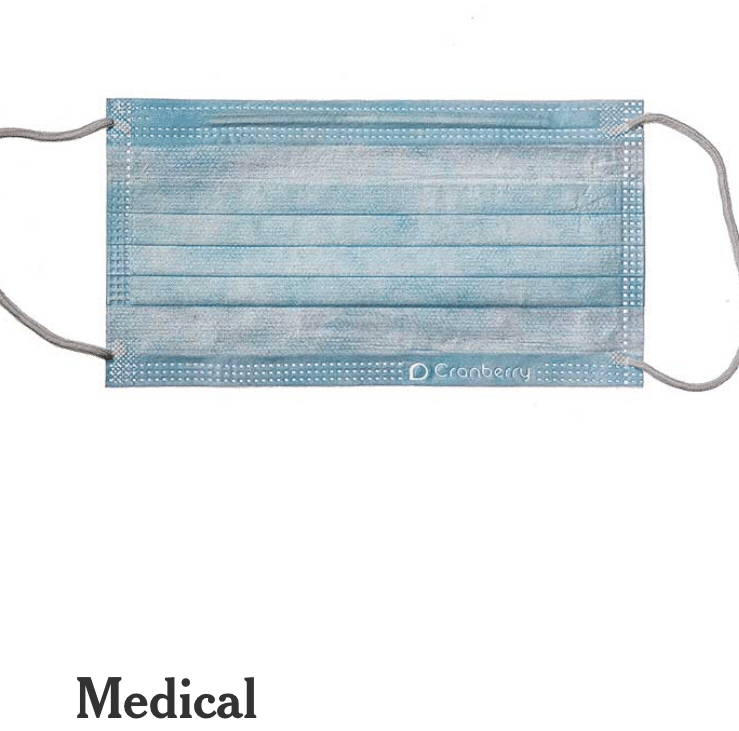
Coronavirus: Which Mask Should You Wear? ≒ コロナウイルス:どのマスクを着用すべきですか? nytimes
Coronavirus: Which Mask Should You Wear?
コロナウイルス:どのマスクを着用すべきですか?
By Tara Parker-Pope, Rachel Abrams, Eden Weingart and Tony CenicolaApril 17, 2020
https://www.nytimes.com/interactive/2020/health/coronavirus-best-face-masks.html
Face masks have become an emblem in the fight against the coronavirus, with officials in the United States and elsewhere recommending — and in some cases requiring — that people wear them to help slow the spread of the deadly outbreak.
Figuring out what to wear is not so easy. N95 and medical masks, which offer the most protection and are heavily in demand, should be reserved for health care workers who are regularly exposed to infected patients.
Here’s a look at some of the types of masks you might encounter, how they work, what to consider when making your own and the level of protection they could provide.
N95

The N95 is the most recognizable and effective mask. Its name means it can block at least 95 percent of tiny particles — 0.3 microns — that are the hardest to capture. An average human hair is about 70 to 100 microns wide.
These masks, which are designed for single use, are made with polyester and other synthetic fibers, including layers of tangled fibers that act as a filter to make it harder for particles to pass through.
Make sure there are no gaps between the edge of the mask and your skin. This one includes a nose piece that is molded to your face. Many health care and other workers do annual fit tests that check for air leakage and ensure that masks are sized and fit properly. (If you have facial hair, you won’t get a proper fit. They don’t fit well on children, either.)
Some N95s have exhalation valves on the front, which make it easier to breathe. Those masks are often used in construction. A mask with a valve should not be used in areas that are meant to be sterile, like hospital operating rooms, and would not protect others from what you breathe out.
Medical

Medical masks come in a few varieties and are less effective than N95s: Some filter as much as 60 to 80 percent of small particles under lab conditions. When worn properly, they can help prevent the spread of the coronavirus by catching droplets when you cough or sneeze.
Medical masks are often made out of layers of breathable, paperlike synthetic fabric that is cut into a rectangular shape and has pleats to help it expand and fit more snugly around your face. They are disposable and designed to be used just once.
While they can protect you from large droplets and splatter, their looser fit is partly what makes them less effective than N95s.
Homemade

With medical masks in short supply, many have turned to making or buying homemade ones. Depending on the fabric and how it’s made, a homemade mask can sometimes protect the way a simple medical version does. And any face covering is better than nothing.
A good homemade mask uses a material that is dense enough to capture viral particles, but breathable enough that you can tolerate it. This one is made of cotton fabric.
You can also use materials like a heavy cotton t-shirt, flannel or a tightly woven dish towel. Material with a higher thread count — which allows very little light to filter through — will likely offer the best protection.
Various patterns for making a cotton mask have spread around the internet. Look for one that has at least two layers of material, comes up over your nose and below your chin and has secure straps.
Homemade With Filters
This is another homemade mask, made from 100-percent cotton t-shirts, with a pocket sewn in to hold an additional filter.
We used a coffee filter in this mask. Paper towels have also been tested. One experiment found that two layers of paper towels on their own blocked between 23 and 33 percent of 0.3-micron particles.
People have been experimenting with filtering materials, including air filters and vacuum bags. They can be effective but can present risks. Many are not breathable and may contain harmful fibers that you could inhale. Also, the average person doesn’t need the level of filtration that these materials provide.
Whatever filter you use, make sure there is a layer of cotton or a similar material on either side of the filter, like the pocket in this mask.
A mask is effective only if worn properly, fitting snugly from the top of the nose to below the chin with no gaps. Masks should be worn the entire time you are outside, and should not be moved up and down. While no mask is 100 percent effective, it can help keep both you and others safe when combined with social distancing and regular hand washing.
We have more coverage: Here’s a complete guide to masks, tips on how not to wear one, what the best materials are for making a mask and even how to sew your own.
Reporting and text by Tara Parker-Pope and Rachel Abrams, photographs by Tony Cenicola and design and production by Eden Weingart. Homemade masks courtesy of Lisa Montalvo, Iris Friedman and Kate Eckert.
コロナウイルス:どのマスクを着用すべきですか?
Tara Parker-Pope、Rachel Abrams、Eden Weingart、Tony Cenicolaによる2020年4月17日
レアーアンエスパニョール
フェイスマスクはコロナウイルスとの闘いの象徴となっています。米国などの当局者は、致命的な発生の拡大を遅らせるために人々がマスクを着用することを推奨しています。
何を着るかを考えるのは簡単ではありません。 最も保護を提供し、需要が非常に高いN95と医療用マスクは、定期的に感染した患者に曝されている医療従事者のために予約する必要があります。
ここでは、遭遇する可能性のあるマスクのタイプのいくつか、それらがどのように機能するか、独自のマスクを作成するときに考慮すべきこと、およびそれらが提供できる保護のレベルについて見ていきます。
N95

N95は最も認識され効果的なマスクです。 その名前は、捕捉が最も難しい小さな粒子(0.3ミクロン)の少なくとも95%をブロックできることを意味します。 平均的な人間の髪の毛の幅は約70〜100ミクロンです。
使い捨て用に設計されたこれらのマスクは、粒子が通過しにくくするためのフィルターとして機能する絡み合った繊維の層を含む、ポリエステルおよび他の合成繊維で作られています。
マスクの端と肌の間に隙間がないことを確認してください。 これには、顔に合わせて成型されたノーズピースが含まれます。多くの医療従事者やその他の労働者は、空気漏れをチェックし、マスクのサイズと適切なサイズを確認する年次フィットテストを行っています。 (顔の毛があると、適切なフィット感が得られません。子供にもフィットしません。)
一部のN95の前面には呼気バルブがあり、呼吸しやすくなっています。これらのマスクは建設でよく使用されます。バルブ付きのマスクは、病院の手術室など、無菌であることが意図されている領域では使用しないでください。また、呼吸から他の人を保護することはできません。
医療

医療用マスクにはいくつかの種類があり、N95ほど効果的ではありません。ラボの条件下では、小さな粒子の60〜80%をろ過するものもあります。 適切に着用すると、咳やくしゃみをするときに水滴をキャッチして、コロナウイルスの拡散を防ぐのに役立ちます。
医療用マスクは、通気性のある紙のような合成繊維の層から作られることが多く、長方形の形状にカットされ、プリーツが付いているため、拡張して顔の周りにぴったりとフィットします。 それらは使い捨てで、一度だけ使用するように設計されています。
それらは大きな液滴やスプラッタからあなたを保護することができますが、その緩い適合は、部分的にそれらをN95よりも効果が低くするものです。
自家製

医療用マスクが不足しているため、多くの人が自家製のマスクを作るか購入するようになっています。 生地とその製造方法によっては、手作りのマスクがシンプルな医療バージョンの方法を保護することがあります。 そして、顔を覆うことは何もないよりはましです。
優れた自家製マスクは、ウイルス粒子を捕らえるのに十分な密度であるが、許容できるほど十分に通気性のある材料を使用しています。 これは綿の布でできています。
厚手の綿のTシャツ、フランネル、きつく織ったおしぼりなどの素材も使用できます。 スレッド数が多い素材(フィルターを通す光がほとんどないため)は、おそらく最高の保護を提供します。
コットンマスクを作るための様々なパターンがインターネットに広がっています。 少なくとも2層の材料があり、鼻の上にあごの下にあり、安全なストラップが付いているものを探します。
フィルターで自家製

これは、100%コットンのTシャツで作られた別の自家製マスクで、追加のフィルターを入れるためにポケットが縫い付けられています。
このマスクにはコーヒーフィルターを使用しました。 ペーパータオルもテストされています。 ある実験では、2層のペーパータオル自体が0.3ミクロンの粒子の23〜33%をブロックしていることがわかりました。
人々は、エアフィルターや真空バッグなどのフィルター材料を試しています。 それらは効果的ですが、リスクをもたらす可能性があります。 多くは通気性がなく、吸入する可能性のある有害な繊維を含んでいる可能性があります。 また、平均的な人は、これらの材料が提供する濾過のレベルを必要としません。
使用するフィルターが何であれ、このマスクのポケットのように、フィルターの両側に綿または同様の材料の層があることを確認してください。
マスクは、適切に着用した場合にのみ有効であり、鼻の上からあごの下まで隙間なくぴったりとフィットします。 外にいる間は常にマスクを着用し、上下に動かさないでください。100%の効果があるマスクはありませんが、社会的距離と定期的な手洗いを組み合わせると、あなたと他の人の両方を安全に保つことができます。
詳細はこちら:マスクの完全なガイド、着用しないためのヒント、マスクを作成するための最良の材料、さらには自分で縫製する方法です。
Tara Parker-PopeとRachel Abramsによるレポートとテキスト、Tony Cenicolaによる写真、Eden Weingartによるデザインと制作。 自家製マスクは、Lisa Montalvo、Iris Fried
この記事が気に入ったらサポートをしてみませんか?
